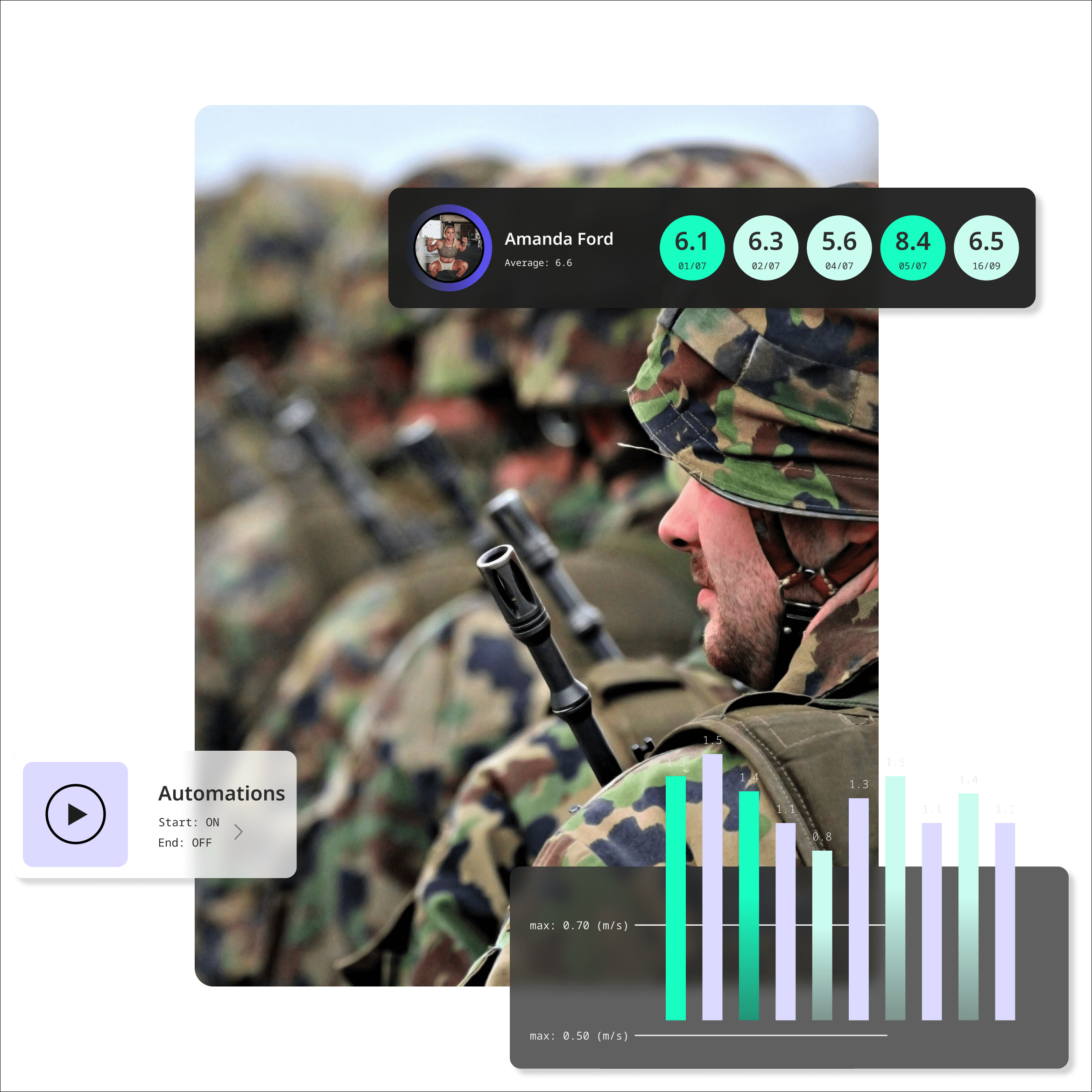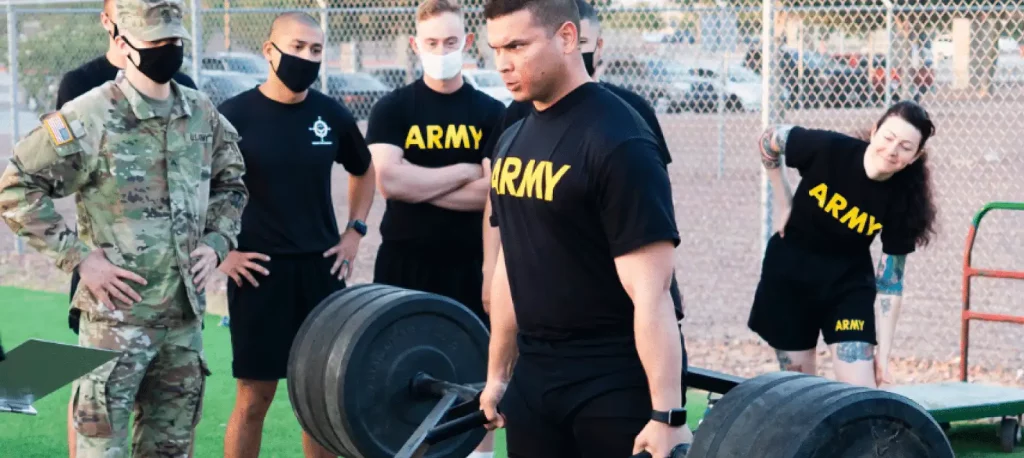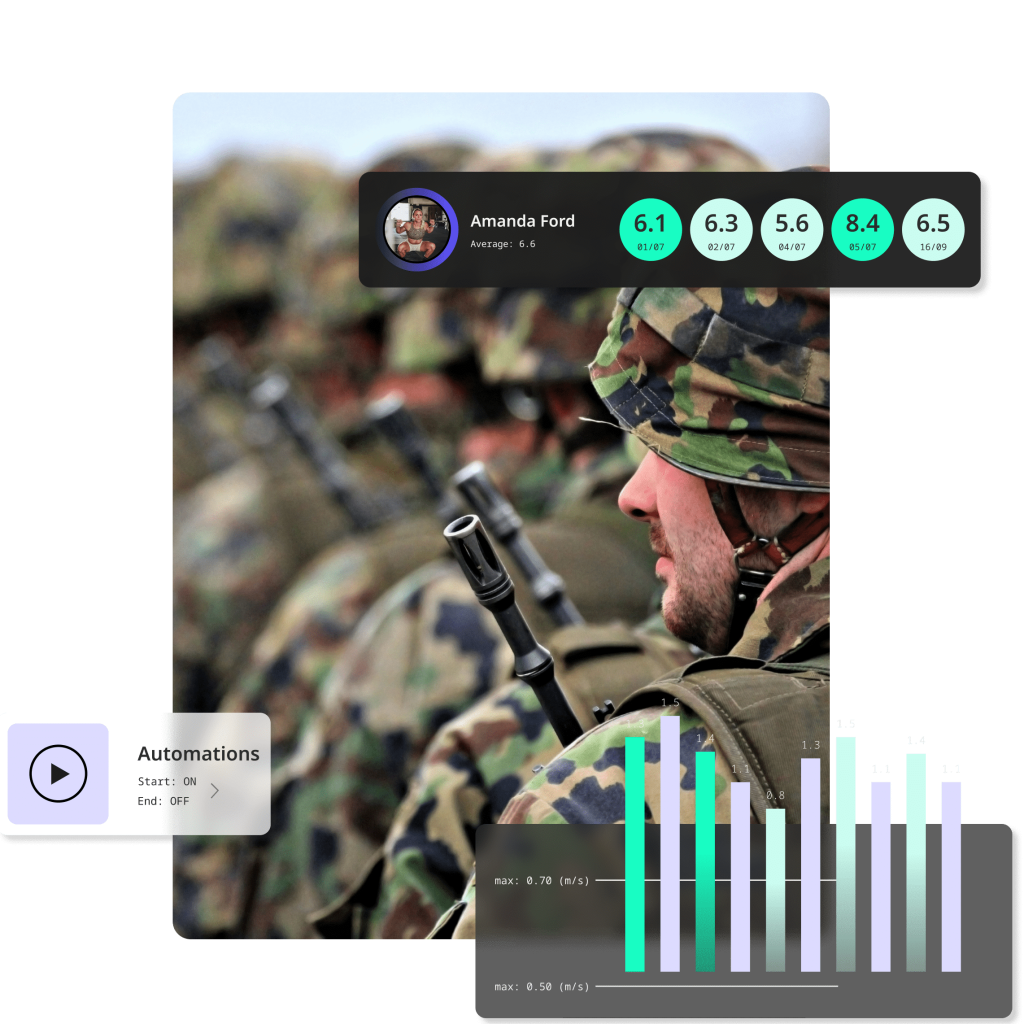22 de May de 2025
Tactical Strength and Conditioning (TSC)
Enhancing Readiness for Military, Law Enforcement, and First Responders
Tactical Strength and Conditioning (TSC) focuses on boosting the physical preparedness of professionals operating in high-stress, unpredictable environments—such as military personnel, law enforcement officers, firefighters, and other emergency responders.
Unlike general fitness routines, TSC prioritizes real-world tasks: carrying heavy gear, sprinting under load, conducting rescues in hostile conditions, and staying focused during extended missions.
Below is a comprehensive guide to TSC, including how Velocity Based Training (VBT) and related principles can optimize results.

Tactical
What Is Tactical Strength and Conditioning?
Tactical Strength and Conditioning is a specialized approach that mirrors the rigorous demands of protective services and emergency response roles. The goal is to build and maintain attributes such as:
- Maximal Strength for moving heavy objects (like equipment or injured personnel).
- Cardiovascular and Muscular Endurance to support long, intense shifts or multi-hour rescue operations.
- Explosive Power and Speed to handle sudden sprints, evasive actions, or high-power maneuvers under load.
- Agility and Balance for quick directional changes and sure-footedness in unpredictable terrains or crisis scenarios.
- Stress Management and Mental Resilience to remain calm and decisive under life-threatening conditions.

Essential Physical Demands in Tactical Occupations
- Strength and Power
Operators often carry substantial loads—body armor, firearms, medical packs, or specialized tools. Lifting, dragging, or hoisting loads calls for a foundation of maximal strength. Meanwhile, explosive power is vital for dynamic tasks like breaching, sprinting to cover, or scaling obstacles. - Muscular and Cardiovascular Endurance
Whether it’s patrolling uneven terrain for hours or tackling a prolonged high-intensity incident (like firefighting in extreme heat), extended endurance is non-negotiable. TSC programs therefore blend aerobic training with high-rep or interval-based strength work. - Agility and Coordination
Navigating cramped or obscured spaces (e.g., a burning building or a confined suspect environment) demands precise footwork and rapid changes of direction. Cone drills, lateral bounding, and reactive footwork exercises build these capacities in a controlled setting. - Core Stability and Balance
Wearing heavy armor or gear shifts one’s center of gravity, making stability paramount. TSC addresses core stability with planks, anti-rotational movements, and single-leg exercises to improve control under load. - Stress Management
Tactical professions involve intense mental strain. Integrated scenario training with simulated stressors helps operators remain effective when fatigue and adrenaline threaten to erode technique.

Building a Tactical Strength and Conditioning Program
A typical TSC program uses periodization (preparatory phases, specialized phases, maintenance cycles) to ensure progressive adaptation while accounting for on-duty schedules and mission-readiness needs. Below is a sample framework:
Phase 1: Foundational Strength and Movement Quality (4–6 Weeks)
- Objective: Solidify technique, correct imbalances, and prep the body for heavier loads.
- Core Exercises: Squats, deadlifts, push-ups, pull-ups, farmer’s carries.
- Conditioning: Low-to-moderate intensity aerobic work (e.g., jogging, rucking, cycling).
- Mobility and Injury Prevention: Focused warm-ups, dynamic stretches, foam rolling.
Phase 2: Power and Job-Specific Endurance (4–8 Weeks)
- Objective: Convert strength to explosive power. Integrate field-related drills.
- Power Movements: Kettlebell swings, Olympic variations (hang cleans), plyometrics (box jumps).
- Job-Specific Drills: Dragging weighted mannequins, loaded carries simulating rescue tasks, short sprints with gear.
- High-Intensity Intervals: Shuttle runs, hill sprints, circuit-based training mimicking operational workloads.
Phase 3: Maintenance and Operational Readiness
- Objective: Sustain gains in strength/power, limit fatigue.
- Reduced Volume: Keep core lifts at moderate intensity (around 70–80% 1RM) for minimal stress.
- Job-Specific Circuits: Quick, high-intensity workouts addressing real-world tasks (e.g., breaching practice with sled pushes, partner carries).
- Recovery Emphasis: Prioritize mobility, low-impact aerobic sessions, and adequate rest to ensure alertness on duty.

Tactical
Integrating Velocity Based Training (VBT) in TSC
One innovation that can significantly enhance Tactical Strength and Conditioning is Velocity Based Training. By using a VBT device, coaches measure the speed of lifts in real time.
This data-driven feedback offers unique insights into an operator’s daily readiness and allows for immediate load adjustments:
- Identify Load Velocity: Each operator has unique velocity capabilities under different loads. Tracking these lets you set precise training targets for strength, power, or speed.
- Stay in Targeted Velocity Zones: You can specify whether a training day emphasizes strength (slower velocity, heavier load) or explosive power (faster velocity).
- Manage Fatigue or Velocity Loss: If bar speed drops below a certain threshold, it’s a clear sign to reduce the volume or intensity to avoid overtraining—critical for tactical pros who can’t afford to be fatigued on duty.
- Synchronize Team Monitoring: With large groups or different shifts, VBT helps unify data in a single platform, making it simpler to align training regardless of an operator’s schedule.

Best Practices and Considerations
- Realistic Scenario Integration
Dragging a casualty dummy, climbing walls, and simulating forced-entry tasks replicate real missions. Incorporate these into circuit training or stand-alone skill sessions to bridge the gap between the gym and field operations. - Holistic Recovery
TSC must address incomplete sleep cycles, shift rotations, and the psychological toll of high-stress duties. Encourage hydration, nutrient-dense meals, and structured deload periods. - Regular Assessments
Physical readiness tests (PRTs), timed obstacle courses, or live drills can highlight whether training is meeting operational demands. Tracking improvements in both metrics (e.g., 1RM lifts) and performance (e.g., time to climb a flight of stairs with gear) validates program efficacy. - Communication with Leadership
In many agencies, training time or resources can be limited. Gaining support from command staff or department heads is essential for consistent scheduling, funding for equipment, and policy alignment. - Consistency Over Intensity
It’s better to have a well-structured, steady program than intermittent bursts of overly aggressive training. Tactical pros cannot afford injuries sustained from reckless overexertion—they risk losing mission capability and operational readiness.

Final Thoughts on Tactical Strength and Conditioning
Tactical Strength and Conditioning is not a luxury—it’s an operational necessity for those serving in frontline roles. By blending fundamental lifts, targeted endurance work, and scenario-based drills, TSC professionals build a physically robust and mentally resilient workforce. And with the addition of advanced tools like Velocity Based Training, coaches can refine every session, ensuring that tactical athletes train smarter, recover better, and maintain peak readiness.
Ultimately, the goal of a TSC program is straightforward: safeguard professionals and the citizens they protect by maximizing on-the-job performance and minimizing preventable injuries. A carefully orchestrated blend of strength, endurance, agility, mental toughness, and data-driven refinement sets the stage for safer, more effective missions in even the most demanding environments.
